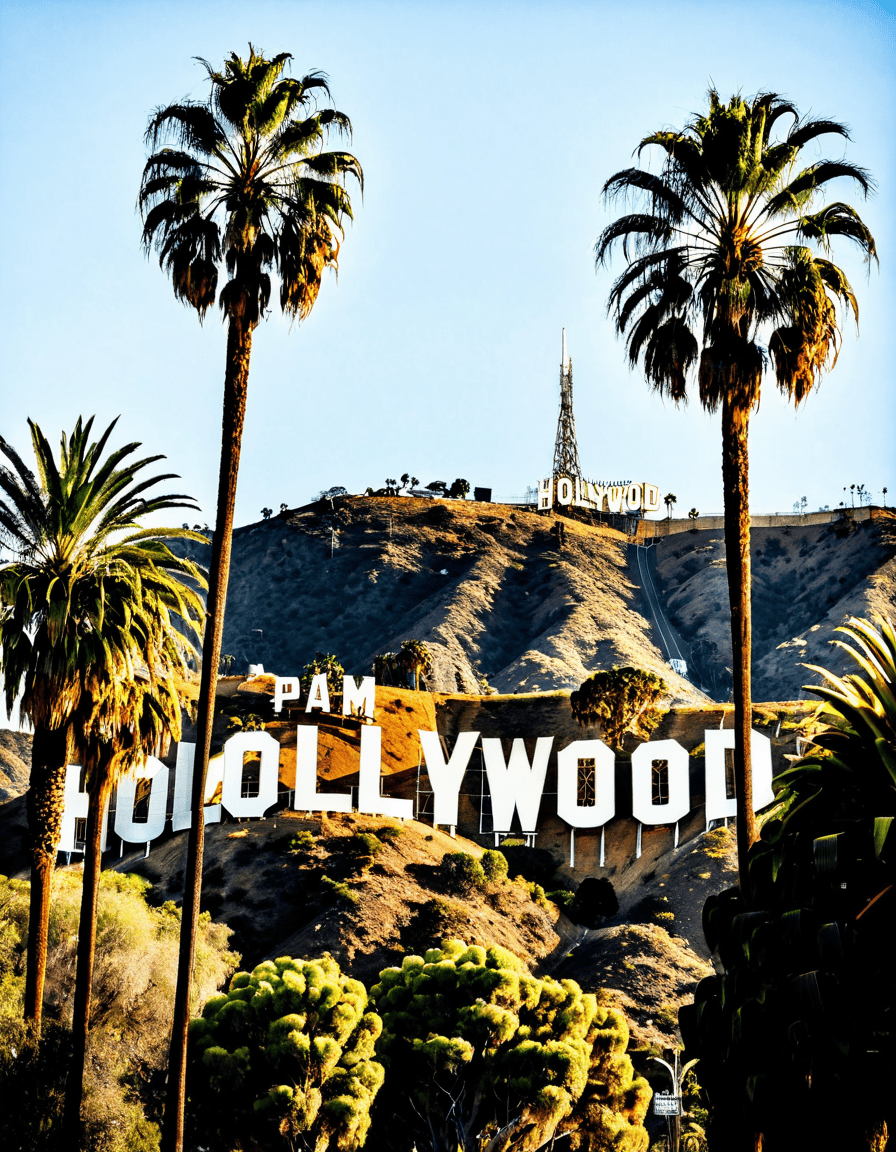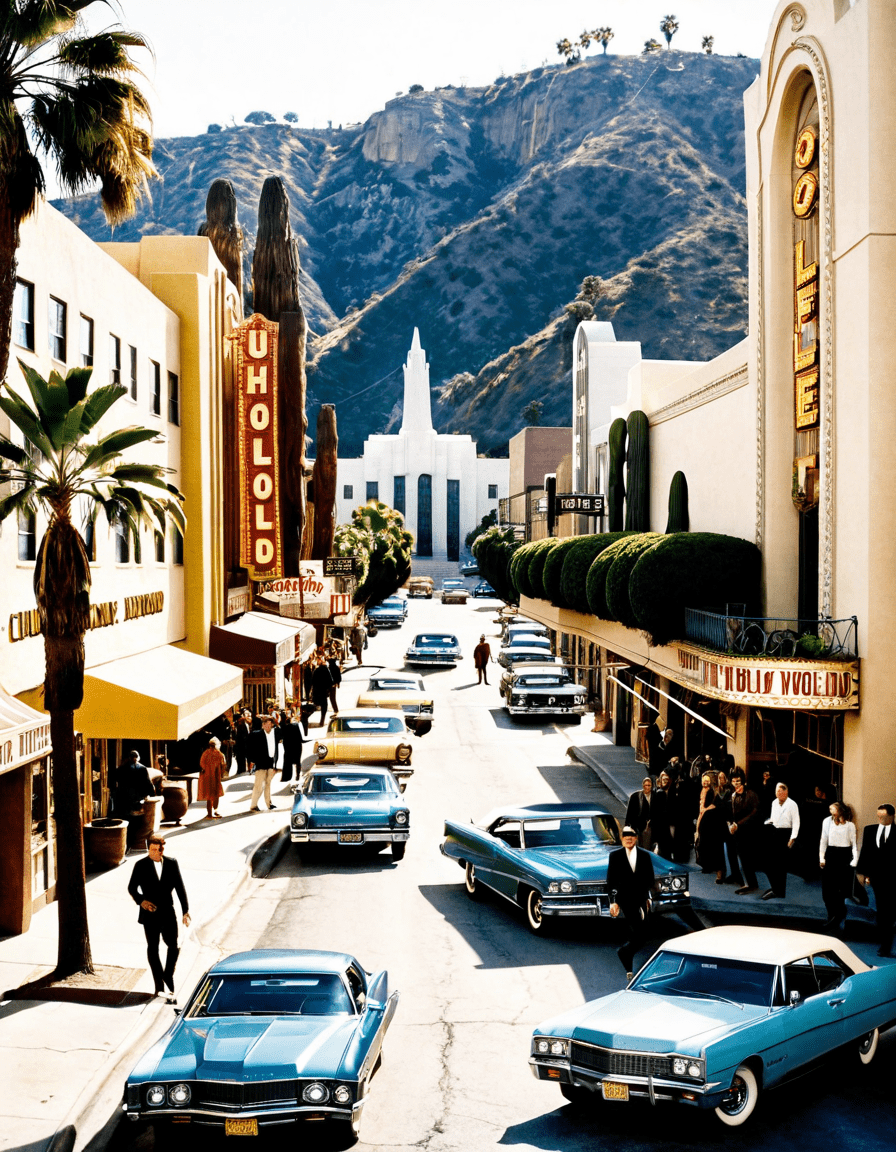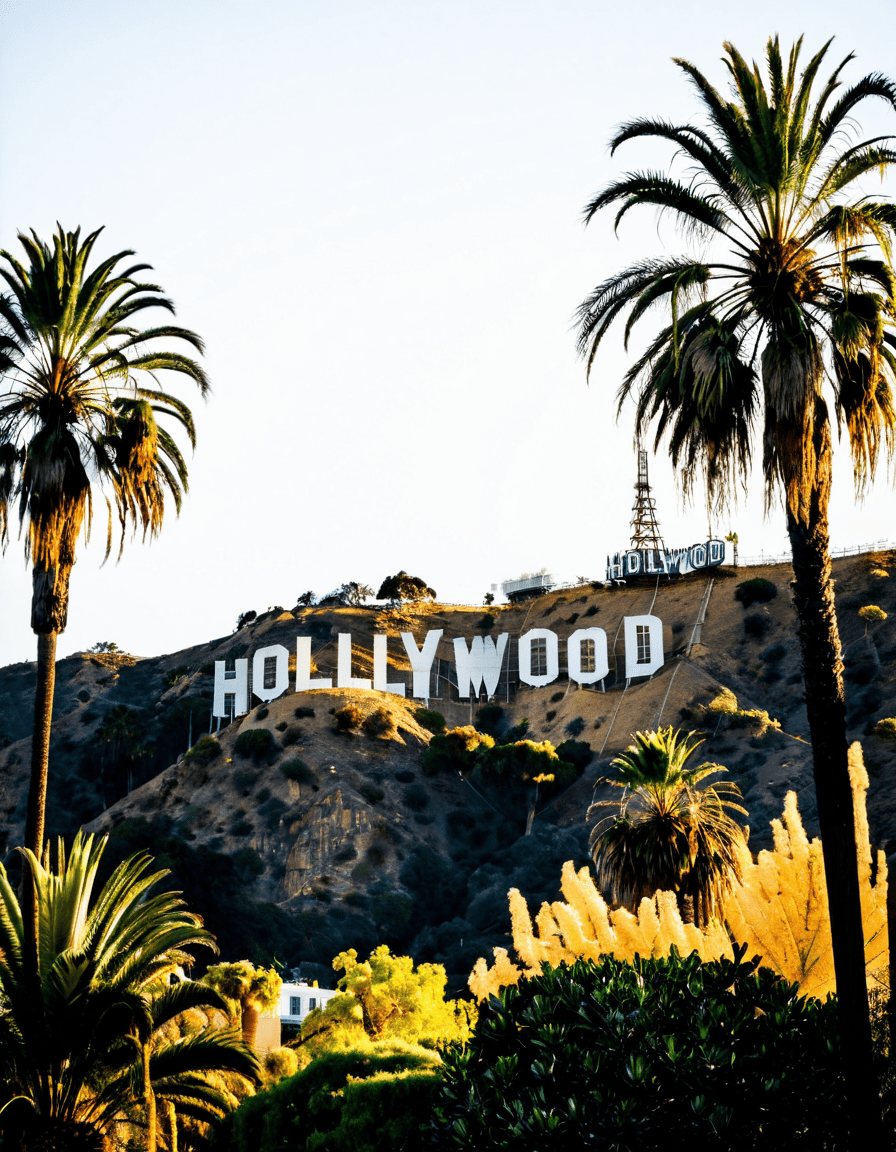Quentin Tarantino’s Once Upon A Time In Hollywood transports us back to the sun-soaked streets of Los Angeles in the 1960s, a pivotal decade in film history. This film is a love letter to a bygone era, sprinkled with the nostalgia of vintage cars, flickering neon lights, and the unforgettable music of the time. Within its frames, Tarantino intricately weaves fact and fiction, introducing us to a tapestry full of both celebrated Hollywood icons and lesser-known players whose journeys intersect with the fabled lives of the era’s stars. By exploring this intricate blend of history and imagination, Once Upon A Time In Hollywood draws audiences into a magical world where dreams flourish and shadows lurk, prompting viewers to remember both the allure and the disillusionment that comes with fame.

Exploring the Allure of the 1960s Through ‘Once Upon A Time In Hollywood’
Los Angeles in the 1960s was not just a location; it was a promise of glamour and adventure. Tarantino meticulously selected key locales such as the Cinerama Dome and the bustling Hollywood Boulevard as emblematic backdrops that enhance the viewing experience. These places serve as reminders of a cinematic utopia, where dreams were conceived and where the glitz of Hollywood culture was palpable in the air.
Filming techniques and set designs, crafted to perfection, resonate deeply with fans old and new. Tarantino’s sincere passion for the elements of the past shines brightly, allowing viewers to reminisce about an era filled with classic films and undisputed stars. With each shot, Once Upon A Time In Hollywood becomes a canvas of artistic expression, reflecting not just the aesthetic of the time, but the vibrancy of the stories held within silver screen memories.
In this cinematic homage, Tarantino sheds light on the duality of Hollywood – a place of fierce ambition and equally fierce cynicism. By allowing characters like Rick Dalton and Cliff Booth to walk the streets of Hollywood, he illustrates how the allure of stardom often dances dangerously close to its shadowy side, proving that fame is as capricious as it is coveted.

Top 5 Elements That Make ‘Once Upon A Time In Hollywood’ Stand Out
To really understand how Once Upon A Time In Hollywood captures the magic of Tinseltown, here are five standout elements you can’t overlook:
A. Authentic Production Design
Every detail counts! Whether it’s the vintage Cadillacs cruising down Sunset Boulevard or the perfectly aligned billboards advertising pop culture phenomena, the production design drags the audience back in time. From clothes to props, it creates an ambiance so rich, you can practically smell the popcorn at Grauman’s Chinese Theatre.
B. Star-Studded ‘Once Upon A Time In Hollywood’ Cast
C. Cinematic References and Homages
D. Soundtrack that Resonates
Hang on to your headphones, folks! The soundtrack is a time capsule of the 1960s, with every song adding flavor to the unfolding drama on screen. From Paul Revere & the Raiders to Buffalo Springfield, the selections not only underscore the action but also tap into the viewer’s emotions, giving each scene an extra layer of depth.
E. A Reflection on Hollywood’s Evolution
Tarantino excels in crafting a narrative that reflects on friendships and fading fame, all entwined with the rapid evolution of Hollywood itself. The juxtaposition of fictional characters with real-life figures invites audiences to consider the transformation of the industry and society as a whole, leaving us pondering the cost of progress.
The Interplay Between Fiction and Reality in ‘Once Upon A Time In America’
Reflecting its title, Once Upon A Time In America resonates with its audience in similar ways. Tarantino uses Hollywood’s lens to address pivotal moments in American history, offering critique on societal changes through the tapestry of cinema. Just like its counterpart, Once Upon A Time In Hollywood serves as a cultural commentary, questioning not just the fabric of movies, but how they reflect our collective consciousness.
The way Tarantino blends truth with fiction in Once Upon A Time In Hollywood adds layers to the viewing experience, compelling audiences to draw connections between the narrative on-screen and the societal realities of the 1960s. This interplay encourages viewers to re-evaluate how stories shape perceptions and cultural memory, an exploration that becomes all the more relevant today.
By leaning into nostalgia while simultaneously critiquing the past, Tarantino gives a voice to those lost in the shuffle of Hollywood—a nuanced portrayal of reality that feels meaningful today. It prompts viewers to reflect on the broader narrative of America while gently reminding them of the dreams that drive people to Hollywood, despite the dangers along the way.
Legacy and Impact of ‘Once Upon A Time In Hollywood’
Once Upon A Time In Hollywood made quite a splash upon its release, bagging an impressive ten Academy Award nominations, including Best Picture. It ultimately took home two golden statues—one for Best Supporting Actor (Brad Pitt, no less) and another for Production Design. However, the film’s legacy reaches beyond mere accolades; it has inspired a revival of interest in the real events that shaped the late 1960s and the infamous Manson Family.
As audiences fell in love with the nostalgia of the film, documentaries and retrospectives on the figures depicted—like Sharon Tate and the broader Manson narrative—spilled forth, highlighting the intriguing dynamics at play during that transformative time in Hollywood. As we consume more content on streaming platforms and in theaters, it’s clear that the film managed to capture the zeitgeist, stirring a renewed curiosity about the darker chapters of Hollywood’s history.
The impact of Once Upon A Time In Hollywood extends to all corners of pop culture. Influences are evident in music, fashion, and the ongoing discourse among film enthusiasts debating its merits. It not only honors the ghosts of yesterday but ignites discussions that keep the spirit of the 1960s alive and relevant.
An Enduring Tribute to Hollywood’s Magic
At its core, Once Upon A Time In Hollywood is a heartfelt tribute to Hollywood’s enchanting past, marked by both triumph and tragedy. Tarantino showcases the beauty of a time when filmmaking was a celebrated art form while exploring the gritty realities that often accompany fame. The film elegantly navigates themes of friendship, ambition, and heartache, striking a balance that resonates powerfully with audiences everywhere.
As we enter into the 2020s, the film stands as a testament to what makes cinema truly captivating. The narrative invites us to revel in the magic of Hollywood while simultaneously confronting its stark realities and disillusionments. Through this masterful storytelling, Once Upon A Time In Hollywood ensures that Tinseltown’s legend and allure will continue to enrapture audiences for generations, reminding us of the brilliant tapestry that is American cinema.
In today’s fast-moving world, films like Once Upon A Time In Hollywood serve not just as entertainment but as meaningful explorations of our cultural identity. So, grab your popcorn and dive back into the magic of the movies, because Tinseltown’s stories are never really finished—they’re waiting for you to discover them.
Once Upon An Time In Hollywood: Fun Trivia and Interesting Facts
Behind the Scenes Delights
“Once Upon A Time In Hollywood” is not just a stroll down memory lane; it’s a nostalgic feast for cinephiles! Did you know that director Quentin Tarantino not only penned this love letter to 1969 Los Angeles but actively sought out various influences from his childhood favorites? The film features a plethora of Easter eggs and references to classic films, akin to a candy store for cinephiles. Speaking of sweet delights, if you’re into culinary adventures, there’s a quirky guide to making Cannabutter—a( fun tie-in to the ‘easy-going’ vibe of the 70s that resonates with this film.
Take it or leave it, but scenes featuring Brad Pitt’s character, Cliff Booth, were inspired, in part, by the aura of iconic actors like Steve McQueen. This vibe perfectly captures the era when Hollywood was all dreamy smiles and glitzy scandals. Fun fact: did you catch the Easter egg of a classic actor’s car from Homeward Bound? The film isn’t just about plot points; it’s waves of nostalgia rolling over every scene, tempting viewers to rewind and catch the details they might’ve missed.
Star Power and Cameos
As if the film’s leading stars weren’t enough, it also features a star-studded ensemble that’ll have fans buzzing! For instance, you might find Josh Brolin making waves—check out the treasure trove of Josh Brolin Movies to see how he carved his niche in Hollywood. Moreover, can you spot the cameo of real-life personalities? Keep an eye out for some familiar faces from the Hubie Halloween cast, as they pepper the film with authentic charm.
Another head-turner is the association between American rappers and actors that spill over into the soundtrack. Quite fitting, given the film’s spirit! Speaking of musical flair, bands like Cage The Elephant tie in perfectly with the aesthetic—not unlike how wall posters once graced the bedrooms of young dreamers across the country. This intertwining of music and film evokes the very essence of that era, bringing a modern twist to classic inspirations.
The Legacy of Iconic Moments
“Once Upon A Time In Hollywood” is thriving not just at the box office but also in cultural conversations. One such powerful moment? The film’s portrayal of breakups and reconciliations, reminiscent of the humor in fan-favorite sitcoms. Think of the hilarious dynamics from episodes like Georgie And Mandy ‘s first marriage Episodes that keep audiences roaring with laughter. Interestingly, that blend of humor amid poignant introspection captivates viewers just like the film does.
But for all the levity, there’s an underpinning exploration of life’s harsh truths, roundly echoed in the loss of icons like Mac Miller, whose journey intersects fascinatingly with the film’s themes. As fans draw parallels between real-life struggles and Tinseltown’s glimmer, they can’t help but reminisce about actors like Angus Cloud, further solidifying how the film draws threads from both past and present realities. Such layers ignite conversations that linger long after the credits roll, underlining the importance of storytelling in Hollywood.
Through these fun bits of trivia and connections, it’s clear that “Once Upon A Time In Hollywood” captures not just a time and place but a spirit often missed in today’s cinema. With its rich tapestry, this film invites repeat viewings while providing countless nuggets to uncover, from its legendary cast to the musical gems that infuse every scene with life.





